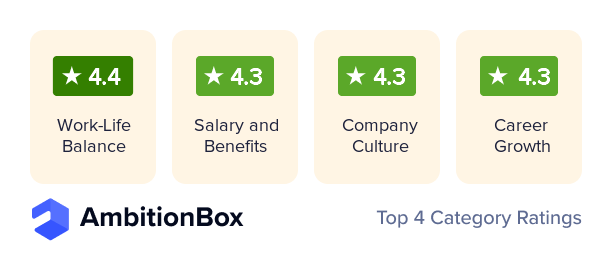Introduction
We often come across phrases like ‘The Future is Cloud’, ‘Cloud-First’ strategy, or the ‘Future is Cloud-Connected’ etc. What do these phrases mean, and is it true that we have arrived into the future already riding the cloud wave, as it were, or are we still some distance away from the all-pervasive cloud in our lives? We shall briefly discuss the all round adoption of the Cloud and its impact on businesses.
Global Cloud Computing Market
As businesses are evolving and revamping their operations, in the wake of the disruptions caused by the COVID-19 pandemic, cloud computing has become a go-to tool to run day-to-day operations and help Pivot themselves into the new normal. It’s an undeniable fact that COVID-19 has played a catalyst role in the adoption of cloud computing across the business world, regardless of size, complexity and location. In fact, the pandemic has been a ‘Growth-hack” for cloud, expediting the migration and bringing about digital transformation, ahead of track. In fact, in every estimate, the pandemic is seen as having accelerated the move towards digital transformation aided by cloud computing. Microsoft’s CEO, Satya Nadella opines that 2 years’ of digital transformation efforts have been achieved in just about 2 months. Gartner predicts that the surge in cloud adoption owing to the pandemic is going to last till at least 2024.
Forrester Research predicts that the global cloud computing market is expected to grow from US$371.4bn in 2020 to US$832.1 bn by 2025, growing at a CAGR of 19.5%. On the other hand, the global public cloud infrastructure market will grow at 35% to $120 billion in 2021. Top global cloud providers AWS, Azure, and Alibaba and Google are the leading revenue-generating companies that are expected to make the most of this new thrust.
Cloud-First Strategy
While pre-pandemic, many organizations felt that being “Cloud-ready” was a nice-to-have, the global disruptions in almost every in-person activity across sectors have made them rethink and re-evaluate their options. In this context, a cloud-centric business operations approach, also known as ‘Cloud-First’ strategy has become the in the new normal. In the third quarter of 2020, Accenture launched Accenture Cloud First and is further planning to invest US$3bn in the next three years to move its clients across industries to the Cloud and put them on the path of Digital Transformation. According to the company, its 100,000 cloud professionals will assist their clients in shaping, hauling, building, and operating their businesses in the cloud and help them realize business value, speed/agility, cost, talent, and innovation benefits.
Accenture is the latest entry into the already crowded Cloud- First market, which has accelerated during the COVID-19, coupled with the cost-cutting impetus by companies. Many other leading companies are planning to assist their clients in their respective cloud journeys, especially when cloud is no longer an ‘option’. In 2013, the UK Government had announced its Cloud-First policy, a flagship technology policy. This involved all the public departments to evaluate moving to the cloud first before opting for other alternatives. UK Government had spent billions in the public cloud by engaging in contracts with AWS, Microsoft, and Google to succeed in its cloud-first program. In the future, the UK Government is committed to a Cloud-First strategy and might increase its spending on cloud computing.
Some analysts are saying that the discussion today should not be on ‘Cloud First’, rather it should be on ‘Cloud Now’.
- Public Cloud – Preferred Choice of the Future: The public cloud has always been the ideal choice for companies globally. Implementation of public cloud is further expected to rise as many companies, especially the first-time users, and small and medium businesses, opt for public cloud services. During the first half of 2020, organizations of all sizes have increased their spending on public cloud services due to the sudden shift of work-from-office to remote work. According to Flexera’s study, public cloud spend is already one of the most significant expenses of the IT budget, especially for large organizations.In 2020, just over one out of ten companies (16%) spent over US$1mnper month on the public cloud. But, in 2021, three out of ten companies (31%) had spent over a million dollars per month on public cloud, and this figure is further expected to rise in the post-COVID-19 period. On the other hand, seven out of ten firms (76%) had spent at least US$100,000 per month on the public cloud.
- Implementation of Cloud: Transitioning to the cloud has always been a hotly debated issue, the arguments bordering on whether smaller companies need a “Cloud First” approach or how to architect the move to the cloud, or the issues around the existing legacy systems or even resistance to change. However, with the pandemic still raging, the debate has moved to how can the imminent transition to the cloud be fast-tracked. When it comes to implementing Cloud computing, by 2022, 91% of IT firms will be on the cloud, and it is expected to rise in the future, followed by the Aviation, Travel & Tourism (79%), and Oil & Gas (78%) sectors. Among the leading sectors, Aviation, Travel, and Tourism face immense re-skilling challenges, with 68% of personnel in these sectors expecting some length of training to adapt to cloud computing and other emerging technologies. For IT companies, the advancement in cloud computing ranks as the second-highest trend in driving industry growth.According to McAfee, 40% of large companies in the UK will be cloud-only companies by 2021, which is expected to rise to 71% in the future. However, a smaller but still significant percentage (14%) of senior IT staff working within the UK don’t believe they will become a cloud-first business anytime soon. A few of those say they don’t think there is any business desire to transition to a cloud-first company.
Cloud – Basic Requirement for A Business
As we are witnessing a tremendous uptake in Cloud adoption by businesses due to the COVID-19, the future might just turn out to be that the cloud is THE fundamental requirement to run a business. According to the study conducted by Flexera, in 2021, 99% of respondents are using at least one public or private cloud. 97% of respondents utilize at least one public cloud, while 80% have at least one private cloud. 78% of the respondents are using the hybrid cloud.
Furthermore, the report states that any organization uses an average of 2.6 public and 2.7 private clouds. Companies experiment with public and private clouds before finally choosing one that suits them (on an average, an organization experiments with 1.1 public cloud and 2.2 private cloud). Therefore, cloud service providers need to offer a limited/trial version of their services to potential customers before opting for their preferred vendor choice.
Cloud Computing – Talent Crunch
Of all the discussion points mentioned above with respect to move to the cloud, one underlying aspect cuts through countries, regions, industry verticals etc; i,e the apparent shortage of skilled resources in cloud computing. If the global trends are to be believed, In the next three years (2021-24), cloud computing will be a strategic driver of new business models to which businesses must adapt to. According to the World Economic Forum’s ‘The Future of Jobs Report’, three out of four businesses (72%) are likely to adopt cloud computing by 2022. However, there is one fundamental problem that companies are facing – the lack of skills in the jobs market. As mentioned earlier, during the COVID-19 pandemic, more companies are moving towards the cloud, and there is an acute shortage of skilled professionals as demand outstrips supply. According to the survey ‘2020 – Challenges in Cloud transformation’, most respondents (86%) believe that talent shortage will continue to slow down cloud implementation across the organizations.
In the United States, tech giants such as Facebook, Amazon, and Google have created a talent crunch by offering attractive, super-competitive benefits packages when compared to the academia. Despite all the difficulties, if an organization can still find the talent, external drivers such as rapid cloud innovation, new business pressures, competition and the need to evolve continuously have made the ability to keep that talent relevant over time an impractical reality. Recent statistics show that 63% of US organizations anticipate the IT skills gap to widen, and 59% expect this talent shortage to continue in the next two years (2022-23).
In reality, the shortage of cloud skills is growing year-on-year, and companies face difficulty finding skilled cloud professionals using traditional recruitment and sourcing methods. Three out of four HR practitioners mention that they are facing trouble in solving the skill gap, and this will be a severe problem for companies if they do not invest and build a talent pipeline and source the candidates for future job openings.
Cloud Skill Development
But IT companies do have an option to overcome this challenge by employing IT training organizations that can find suitable employees in the first place and train them to become cloud professionals. The IT training organizations then move to create a digital hub and develop a culture that encourages employees to learn cloud and digital skills. However, when it comes to teaching of cloud skills to the employees, the majority of companies do not have in-house talent and do need to depend on external training organizations, which can potentially increase their training & development budgets. Also, in the majority of cases it may be out of reach for smaller and medium-sized firms to replicate the success of large IT players in this regard owing to lack of resources and budgets.
Conclusion
Cloud computing professionals do not have shortage of options as the demand is outpacing their supply across industries. The majority of talented professionals are concentrated around major cities, leaving a significant disparity between rural and urban markets, and it will be a long-term phenomenon. However, forced by the pandemic, companies which are allowing their employees to work remotely, may have a ray of hope. Now companies can find candidates from across the world to get their job done but will still need to pay a premium salary to find the right talent.
In short, the cloud skill gap will continue in the future, and demand will be outstripping supply for quite some time. If organizations want their talent to stick to them for quite a bit of time, only offering a competitive salary will not work as they need to provide other benefits, flexibility and build a thriving culture. Otherwise, the employees would look elsewhere to build their careers.











